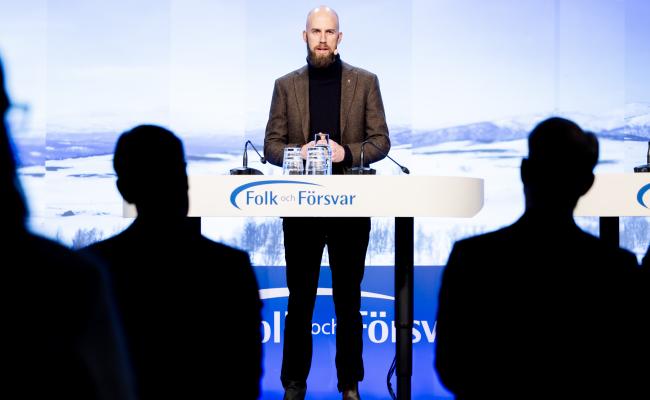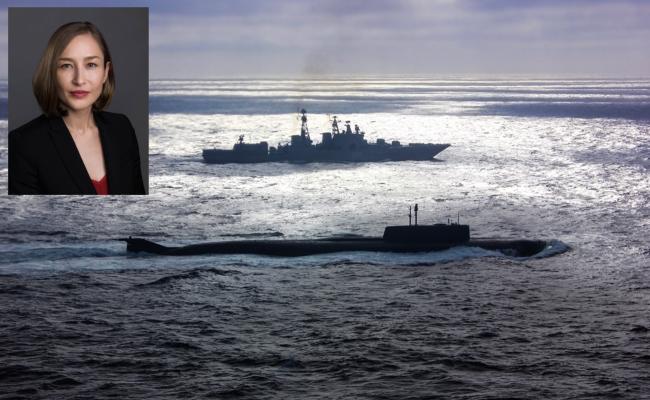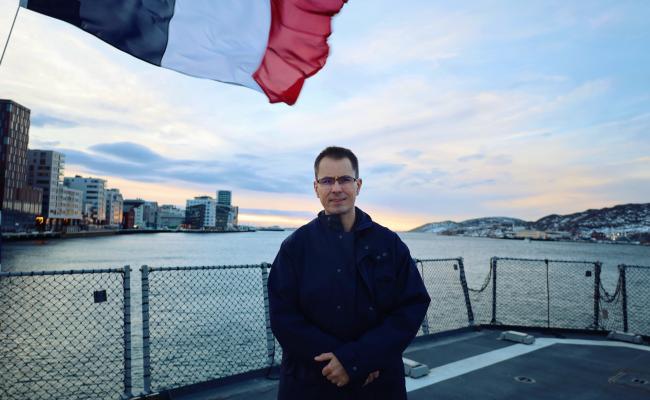Nordic Response: Over 20 000 Soldiers From 13 Nations Will Practice Defending NATO's Northern Flank
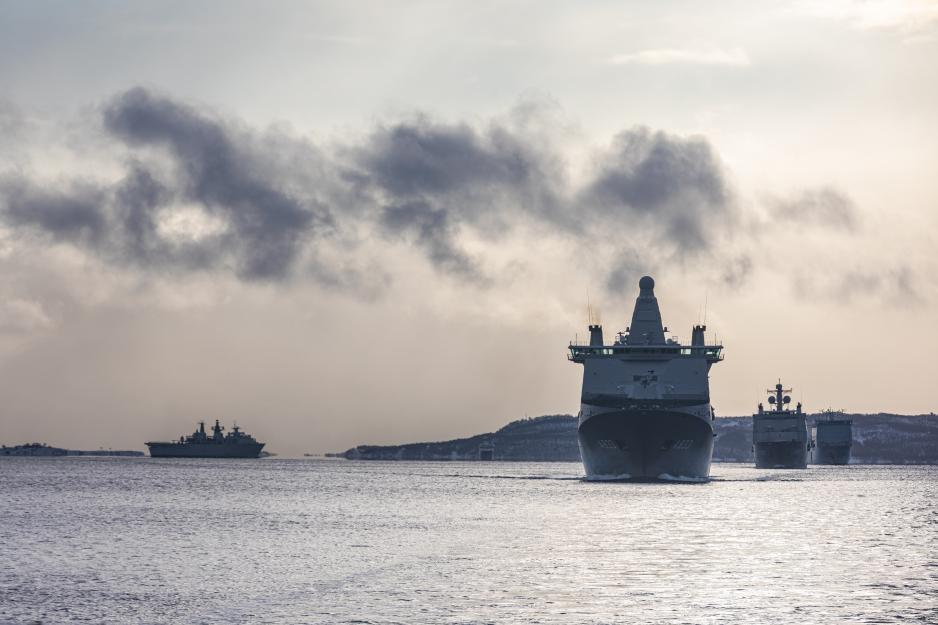
"Nordic Response will be an important milestone within further Nordic integration and for our new regional plan for the northwest," stated the Chair of NATO's Military Committee, Admiral Rob Bauer, this fall. Here, allied vessels sail in formation off the coast of Northern Norway during the integrated exercises Joint Warrior and Joint Viking in 2023. (Photo: Odin Kjendalen/The Norwegian Armed Forces)
In March, Norwegian, Finnish, and Swedish forces will practice defending allied territory in the High North – reinforced by allies from North America and south of Europe. Major military operations have been planned at sea, on land, and in the air. Russia has been informed about the exercise but has not been invited as an observer.
This winter's major military exercise in the North, the Nordic Response, will take place from March 3rd to March 15th. Over 20,000 soldiers from 13 nations will exercise across the northern parts of Norway, Finland, and Sweden – i.e. the Cap of the North.
This will be conducted in close cooperation with NATO's overarching exercise, Steadfast Defender, which began last week, and the British-led marine exercise Joint Warrior.
The shared framework for the exercises is an Article 5 scenario triggered by a fictitious attack against the alliance launched by a near-peer adversary.
In the first phase, Steadfast Defender is about moving reinforcements from North America to Europe.
Then comes Joint Warrior, launched from the UK on February 24th, focusing on securing communication lines in the Northeast-Atlantic and carrying out landing operations on the Norwegian coast.
During Nordic Response, the focus is on the reception of allies and joint operations in the face of a fictional invasion of Finnmark in Northern Norway.
Steadfast Defender in short
– Steadfast Defender 2024 is NATO's largest military exercise since the Cold War. It involves 90,000 soldiers from all 31 member states and the partner country, Sweden.
– The exercise started on January 22nd and will last until June. In practice, it serves as an overarching structure for a series of large-scale national and multinational exercises.
– Steadfast Defender is divided into two phases: 1) Allied reinforcement of Europe across the Atlantic (January-March) – and 2) use of deployed reinforcements in all military domains along NATO's northern and eastern flank (February-June).
– During these six months, Steadfast Defender will include complex sea, land, air, cyber, and space operations across thousands of kilometers.

The aircraft carrier HMS Prince of Wales will take the lead on the UK's contribution to the first phase of the NATO exercise Steadfast Defender – and hereunder the integrated exercises Joint Warrior and Nordic Response in the North. Here, the ship is sailing with the American destroyer USS Gridley during an operation in the North Atlantic. (Photo: Cameron Stoner/US Navy)
Testing new plans
An important objective for this exercise complex is testing and improving NATO's new regional defense plans, which were adopted last summer.
"During Joint Warrior and Nordic Response, we will practice the regional plan for the northwest, which includes the Atlantic Ocean and the European Arctic. This region is placed under the new allied force command in Norfolk, US. In other words, we will report and answer to JFC Norfolk during the training activity," says Commander Senior Grade Thomas Gjesdal, Head of Communications for Nordic Response in the Norwegian Armed Forces.
It has been decided that Norway will be placed under JFC Norfolk, but the formal transfer has not yet been completed, pending the command's build-up. Therefore, the Norwegian Armed Forces will return to answering to JFC Brunssum in the Netherlands after Nordic Response, explains Gjesdal.
As the name indicates, a central aspect of Nordic Response is also Nordic defense integration.
Following Finland's and Sweden's applications for NATO membership, Norway initiated expanding its exercise series Cold Response for this Nordic format.
"We will practice across the entire Cap of the North with associated airspace and sea areas. Personnel and materiel will be moved seamlessly across country borders for high-intensive warfare co-training in a rough Arctic climate," says the Commander Senior Grade.
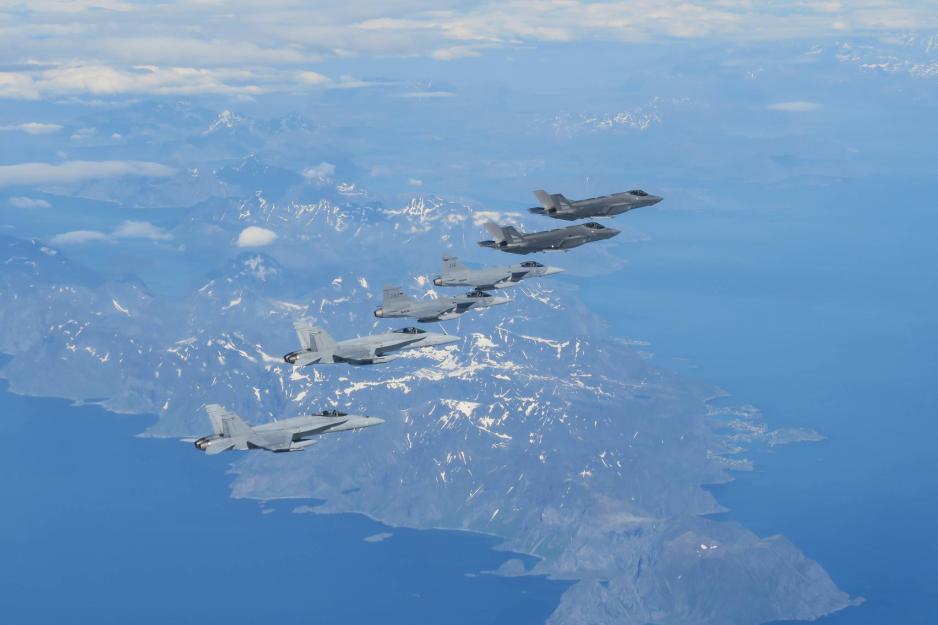
During Nordic Response, a joint Nordic air operations center will be set up in Bodø, Northern Norway, where the chiefs of the Nordic air forces will coordinate activity. Here, Norwegian, Swedish, and Finnish fighters train off the Nordland coast in 2022, respectively F-34 (top), Jas 39 (middle), and F/A-18 Hornet (bottom). (Photo: the Norwegian Air Force)
Security policy context
– "NATO exercises are not directed against any country. In an unpredictable security environment, we must remain ready to deter all threats and to defend all allies," writes the US Department of Defense on Steadfast Defender.
– At the same time, the DoD refers to Russia’s warfare against Ukraine. "While Steadfast Defender has been in planned for years, the exercise incorporates defense plans based on Russia's actions."
Deterrent effect
The significant training activity at sea, on land, and in the air is also meant to contribute to deterrence in the High North.
"A potential opponent should know that an attack on Norway is an attack on NATO – and it will burn. We will showcase our ability to receive and operate with allied forces to defend Norway," says Commander Senior Grade Gjesdal and continues:
"In this context, the maritime exercise part is essential: Receiving allied reinforcements in the North requires the establishment of command of the sea in the North Sea and the Norwegian Sea and sea denial in the Barents Sea. At the same time, we will receive reinforcements on land and in the air from Finland and Sweden. We will practice this before a larger planned battle occurs in central Finnmark."
"In total, there will be maritime operations in the North Atlantic, especially the Norwegian Sea. Landing operations at the coast of Troms and Finnmark up to Hammerfest. Operations on ground from Alta in Finnmark to Hetta in Finnish Lapland. Air operations across the entire Cap of the North. The forces will practice as realistically as possible."
Joint Warrior and British participation
– Joint Warrior is an annual UK-led naval exercise historically conducted off the coast of Scotland. In 2023, it took place of the coast of Northern Norway, closely integrated with the Norwegian-led exercise Joint Viking.
– Participating countries, vessels and aircraft in this year's Joint Warrior and Nordic Response are equivalent; see more info below.
– The exercise activity will involve about 7,000 people from the Royal Navy, with just under 2,000 Royal Marines taking part in amphibious operations.
– The aircraft carrier HMS Prince of Wales will take the lead on the UK’s contribution. The carrier strike group will include the frigate HMS Somerset and two support vessels, as well as US, Spanish and Danish vessels.
– Additional Royal Navy units include a submarine, the frigate HMS Portland, the landing ship RFA Mounts Bay, as well as four fast patrol vessels. Royal Air Force P-8 maritime patrol aircraft and Apache, Merlin and Wildcat helicopters will also attend.
– "This exercise demonstrates the importance we and our allies and partners place on the Artic region for our shared security and enduring commitment to NATO", says Lieutenant Commander Nicholas Stevenson, Public Affairs Officer in the Royal Navy.

During the exercise, Northern Norway will also be reinforced from the east by Finnish and Swedish army and air forces. Here, a Finnish Leopard tank trains in Nordland county during Cold Response 2022. (Photo: Thorbjørn Kjosvold/the Norwegian Armed Forces)
The participation in Nordic Response
– Over 20,0000 soldiers from a total of 13 nations, of which around 8,000 are from Norway, 4,100 from Finland, and 4,500 from Sweden.
– The other participating nations are the USA, Canada, Great Britain, Denmark, Germany, the Netherlands, Belgium, France, Spain and Italy.
– Over 50 naval vessels: Submarines, destroyers, frigates, aircraft carriers, landing ships, and corvettes.
– Over 100 aircraft: Fighter jets, maritime surveillance aircraft, helicopters, and other aircraft.
– On the ground, around 11,000 soldiers will operate with various artillery systems, tanks, tracked vehicles, and other military vehicles.
* Note that these numbers are dynamic up until the exercise.
Allied training in Finnmark
On the Norwegian side, Nordic Response is framed by Norway's self-imposed limitations on allied activity east of the 24th longitude – which runs just east of Hammerfest.
At the same time, the exercise seems to stand out somewhat, as significant allied exercise activity in Finnmark west of this longitude has not been the norm.
During the previous large-scale allied exercise in Norway, Cold Response 2022, the activity in Northern Norway was mainly conducted in Nordland and mid-Troms.
"There is a solid distance to Russia and we are very much aware of what areas we operate in and for our not moving too close to Finnmark," said the then Chief of the Norwegian Joint Headquarters, Lt. General Yngve Odlo.
Yet, as indicated, there is nothing new with allied exercising in West-Finnmark.
"During the Joint Viking exercises in 2015 and 2017, allied exercise activity took place in the Alta area and southward, but in a smaller scale," says Gjesdal and continues:
"For us, it is important to exercise across the entire country – we will defend every centimeter of Norwegian territory. We have no problems dealing with the limitations around the 24th longitude. In Finland, it is somewhat different, as the Finns are used to exercising far north toward the border with Russia."
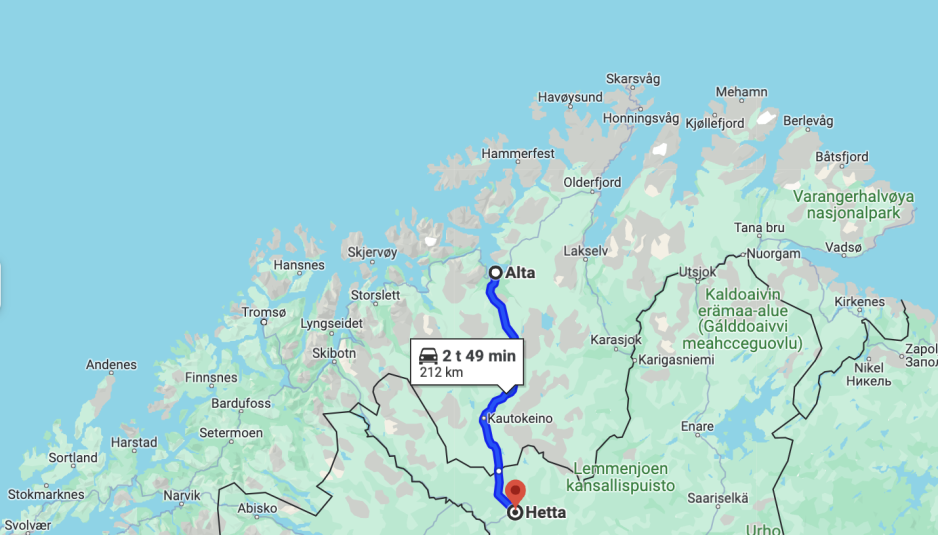
Map over Troms and Finnmark, and some parts of Northern Finland, Northern Sweden, and Northwest Russia. During Nordic Response, army forces will mainly operate in the area between Alta in Finnmark and Hetta in Finnish Lapland. (Screenshot from Google Maps)
Russia has been informed
Like all other member states in the Organization for Security and Co-operation in Europe (OSCE), Russia has been informed about Nordic Response. The Norwegian Joint Headquarters also informed the Russian Northern Fleet directly about the exercise.
"For Norway and NATO, it is important to be transparent to avoid any misunderstanding and show that what we are doing are legitimate defense activities," says Gjesdal.
After the Vienna Document, an agreement between OSCE states on trust-building measures on the military field, host countries of major exercises must invite other member countries as observers if more than 13,000 soldiers will be operating on the ground."
During Nordic Response, fewer than this, around 11,000 soldiers, will train on land. By extension, Russia and Belarus have not been invited to observe the exercise, informs the head of communications.
Russia was invited to observe the training activity during Cold Response 2022, which gathered 30,000 soldiers from 27 states with more significant activities on land, but they declined.
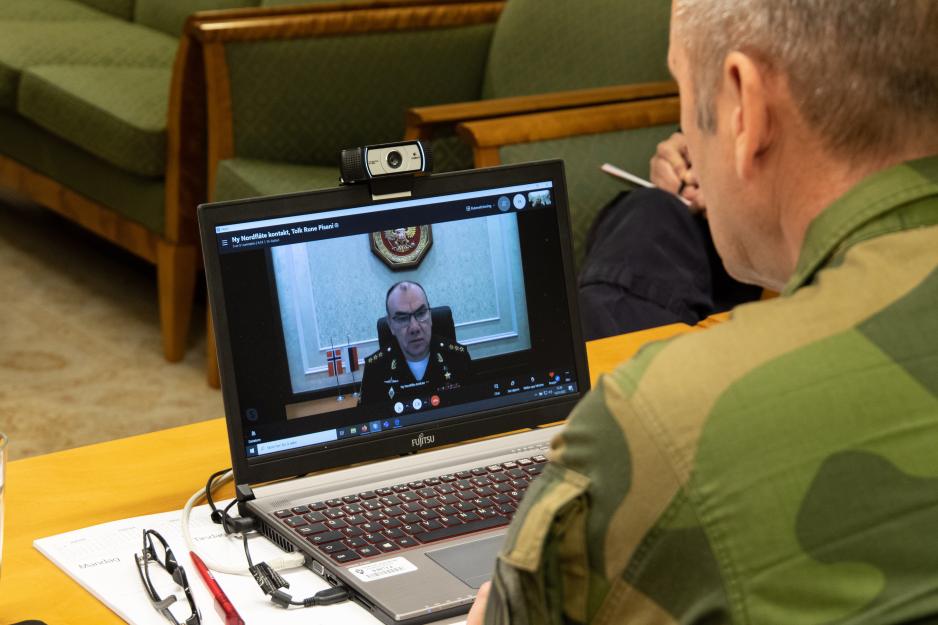
Ahead of Cold Response 2022, the Commander of the Russian Northern Fleet, Admiral Aleksandr Moiseyev, was informed about the exercise in a video meeting by the then Chief of the Norwegian Joint Headquarters (NJHQ), Lieutenant General Yngve Odlo. NJHQ has also informed the Northern Fleet directly about the upcoming Nordic Response exercise. (Photo: Preben Aursand/the Norwegian Armed Forces)
Russian response
How does the Norwegian Armed Forces think Russia will relate to Nordic Response?
"We have good situational awareness in Norway's immediate areas and thorough analyses of what we can expect from the Russian side during the exercise," Captain Commander Gjesdal replies.
Russia will seek to follow Nordic Response closely and can try to use it to fuel anti-Western propaganda, stated Katarzyna Zysk, Professor at the Norwegian Institute for Defense Studies, to High North News in January.
"Some critical public statements might come, but nothing beyond the usual comments from the Russian side during such events. This provided, however, that nothing special happens to further worsen Russia's relationship with the West or the domestic political stability in Russia," Zysk pointed out.
When asked if she thinks Russia's response will be affected by the fact that allied exercise activity will extend northeast to the middle of Finnmark county, the answer was the following:
"I do not see any reason for that, although it can be (mis)used by Russian authorities for propaganda purposes to further strengthen the anti-West narrative. Russia itself has systematically expanded the scale and increased the number of exercises and training in the region since 2007."

During Nordic Response, landing operations will be carried out on the coast of Troms and Finnmark up to Hammerfest. Here, Dutch marines carry out amphibious operations in Troms during Cold Response 2022. (Photo: Torgeir Haugaard/Norwegian Armed Forces)
Will affect road traffic
In Northern Norway, most of the exercise activity will occur from Bjerkvik by the Ofotfjord and inner Troms, extending northeast to Alta and Central Finnmark. This will be visible to the public.
Additionally, there will be significant activity in the sea areas off Troms and Finnmark and in the airspace above the aforementioned areas. The public will notice this to a lesser extent, apart from visible port calls in Harstad, Tromsø, and Alta in particular.
"We also exercise in areas where people live. This is important for realistic training, but we will also show consideration," says Gjesdal.
"Civil aviation will not be affected by the exercise to any particular extent. But it will, at times, be very noticeable along roads in Troms and Western Finnmark. We will inform the public ahead of military traffic on the roads. In general, we must also ask that people show patience in the face of this."
As of now, he can inform that in the period from around February 25th to March 3rd, forces and material will be moved along roads and by sea from northern Nordland and Troms to Finnmark, primarily to the Alta area.
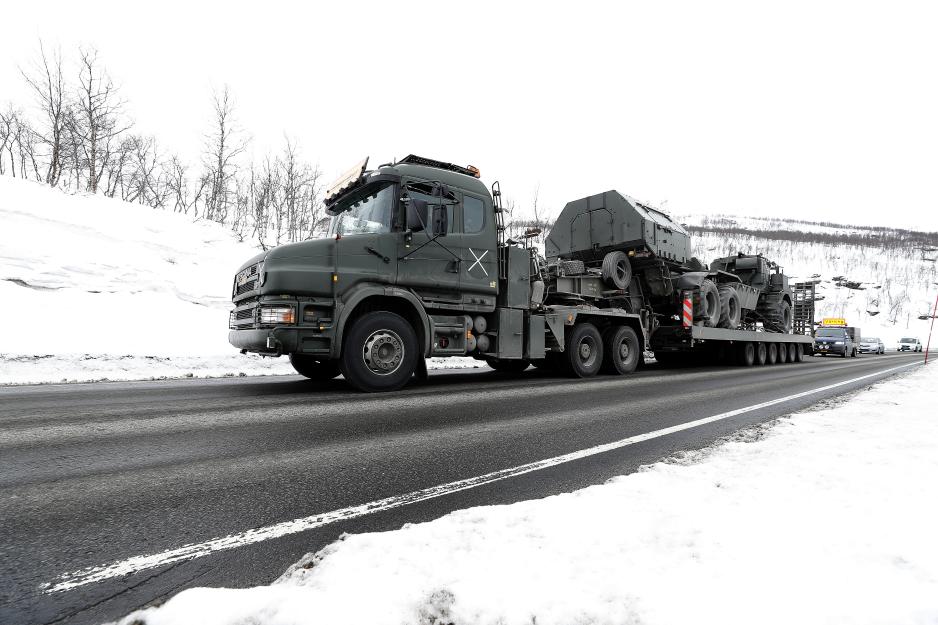
Nordic Response will be visible in the civil society. To inform about the exercise, the Norwegian Armed Forces have held public meetings in Alta and Kautokeino, Finnmark. "At the public meetings and upon the arrival of allied forces for preparations for the field training exercise, we find that people in the North are positive and understand the need for the exercise activity, says Gjesdal. (Photo: Thorbjørn Kjosvold/the Norwegian Armed Forces)
Civil-military cooperation
Nordic Response is also an important exercise in Norwegian and Nordic total defense, Gjesdal points out.
“The defense of Norway and the Cap of the North does not only involve military forces but also civil society. Defense organizations and civil preparedness agencies must know each other's roles. If something happens in peacetime, one is used to the military assisting civilian authorities. In a war situation, it is civil society that must support the military forces,” he says.
In the event of a serious crisis or armed conflict, military forces' need for civilian support in the form of goods, services, personnel and access to infrastructure will exceed the resources the Norwegian (or Nordic) Armed Forces have on a daily basis – and the civil society must then contribute.
“We are in good dialogue about the exercise with civil preparedness authorities – such as the Norwegian Directorate for Civil Protection, relevant county governors, county councils, municipalities and police districts, as well as the Civil Aviation Authority Norway and the Norwegian Public Roads Administration,” Gjesdal adds.
Nordic total defense
Across national borders in the Cap of the North, civilian authorities also cooperate on operational total defense. They are now further developing their interaction in connection with NATO’s Nordic expansion and the Nordic Response exercise.
Cooperation in total defense issues has already been established at a regional level, organized by county governors in Norway, Finland, and Sweden, according to the Norwegian Directorate for Civil Protection (DSB).
“Over several years, the DSB has also cooperated closely with its sister organizations in the Nordic region. Through exchanging information and experiences, the Nordic civil authorities seek to build an even more robust Nordic region. For example, Norwegian emergency services and other emergency network users can talk to Swedish and Finnish colleagues on their respective communication systems,” says Morten Harangen, Press Officer at the directorate.
“Other authorities, such as the three countries' customs and food inspectorates, cooperate on the forces' border crossings.”
Civilian host nation support with a view to Norway as both a receiving and transit country for allied reinforcements is a focus area for the directorate, he adds.
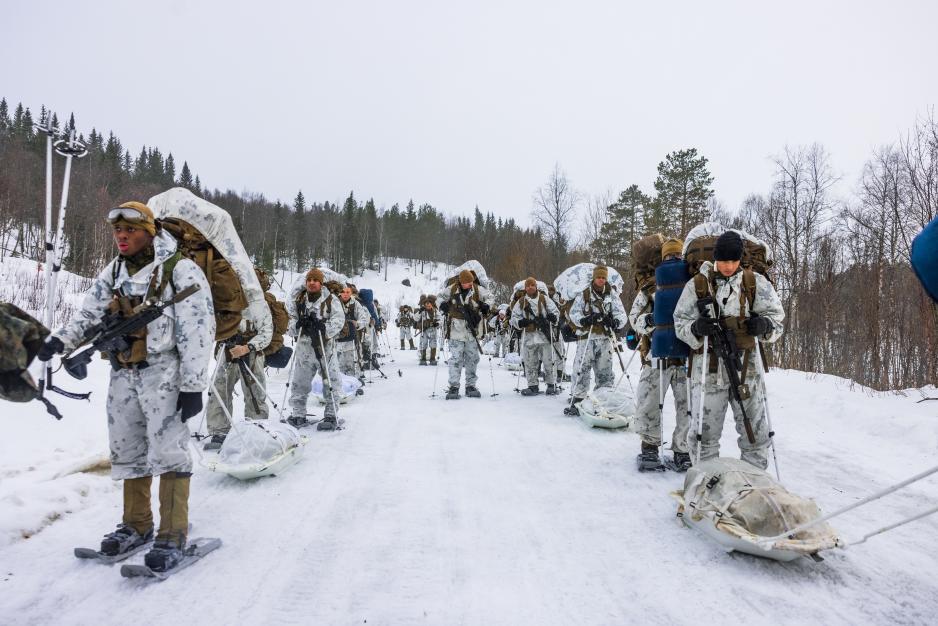
Preparations for Nordic Response are well under way. From January, allied forces and material have arrived for winter training in Troms, as well as in the Finnish and Swedish parts of Lapland. Here, US Marines train at Setermoen a few days ago. After the large field training exercise in Northern Norway, many American soldiers will undergo further training in Sweden and Finland. (Photo: Christopher Hernandez/US Marine Corps)
To be continued
By extension of Nordic Response, the American-led Immediate Response exercise is carried out in April and May, emphasizing cross-border activity.
"Around 1,200 American soldiers will move in the North from Norway to Finland via Sweden. Personnel and equipment will be transported by rail and road," says Gjesdal.
This will be an important exercise in host nation support for the Swedish Armed Forces and civil authorities.
"The operation will be visible in civil society, mainly in the North, affecting everything from security to providing food and fuel and rest stops for soldiers. For us, it is a great opportunity to participate when NATO exercises collective defense," says Lieutenant General Carl-Johan Edström, Chief of Joint Operations in the Swedish Armed Forces.
Throughout the spring, there will also be other allied exercises in the High North:
- Northern Viking: Exercise in April in and around Iceland, emphasizing securing sea and air routes to Northern Europe. It is led by the US Naval Forces in Europe.
- Dynamic Mongoose: Exercise in April-May on anti-submarine warfare in the High North led by NATO Maritime Command.
- Northern Forest: Finnish-led army exercise in May in Rovajärvi, Northern Finland. Rovajärvi is planned as a Finnish-American agreed area under the countries' new defense agreement, which has not yet been ratified. The USA and Norway are confirmed participants in the exercise.
The article has been updated with new information.




